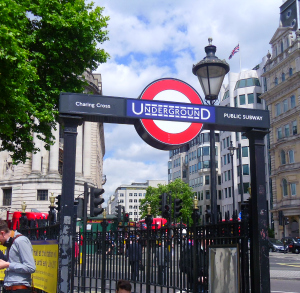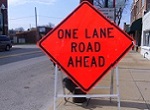Transit and Sprawl Interactions Depend on Existing Urban Form of a City
Last Updated: May 22, 2024
Transit and sprawl relationships and continuing interactions over time sometimes are not readily apparent.
Here is a seemingly simple question for you. Does transit respond to demand, or does it generate demand?
To the extent that it generates demand, and shifts it spatially, transit location and investment could be a tool in fighting sprawl. Yes, we know that transit has many more policy implications than simply its impact on urban form. We address that in the next section, but for the time being, humor us for a moment.
In my city planning practice, I have observed that too often transit is planned in a reactive way based only on what already has occurred, or in an idealistic way in which socially desirable goals are weighted so heavily that realism about the current perception of particular neighborhoods is ignored.
If you are a member of a transit board or planning commission, or an interested citizen, some analysis and thinking will be required to figure out whether a proposed transit change or even your entire existing system is a contributing factor for sprawl in your city, or whether careful transit planning can reduce the harmful effects of sprawl.

Looking at London, for example, since we used a photo of their Underground subway system as our graphic for this page, one could argue that the excellent transit system both:
- Aggravates sprawl because it makes it possible for people to live outside of Zones 1 and 2 in the center of the city, but still commute efficiently into central London for work and play, and
- Reduces sprawl simply because the vitality of the central city is supported and even made possible by the fact that millions of people can reach it easily by using the transit system.
So evaluating a particular transit change in the London metropolitan area would require sophisticated analysis of the relationships between transit and sprawl.
Just to add another layer of complexity, transit policies that appear to aggravate sprawl can actually encourage development to occur in a somewhat compact, although linear, pattern if the metropolitan population is growing. Transit could be a powerful way to induce the growth to occur in one direction and not another.
As a footnote, our experience has been that if the metro area has decided to embrace sprawl, perhaps wishing to decrease overall density for social reasons or to accommodate some planned overall jump in population, purposeful transit expansion could certainly facilitate that.
Transit as a Service
At this point we need to add a disclaimer. Yes, many functions of transit are much more important than alleviating sprawl or even enabling it. We want to acknowledge these four critical services that transit performs before we zero in further on the narrow subject of transit and sprawl:
- Transit is an important human service, allowing people a convenient and economical means of transportation, and allowing those who cannot or will not drive, or who cannot afford to drive, a way to function independently. Mobility impaired people and responsible 15-year-old who cannot be licensed to drive can enjoy some independence. It may enable some commutes to work that would be intolerably congested, unpredictable, and frustrating in a car. It allows people who cannot afford the considerable costs of private automobile ownership to participate in society and the economy. Reduction in damage to persons and property from automobile use also is a benefit.
- Transit provides important environmental benefits, ranging from the obvious one of reducing air pollution attributable to automobile driving to the more subtle benefits of reduced road-building, which include habitat preservation, scenic landscape preservation, a lesser impact on climate change than solo car trips, and avoidance of the considerable environmental costs of producing asphalt or concrete.
- Transit with high ridership can reduce groupthink effects based on social isolation from different economic and ethnic groups. Over time regular riders get to know one another, which can actually increase social capital through more intricate patterns of acquaintance.
- Transit can provide an economic development benefit by allowing manufacturing or land uses that require quite a bit of real estate, such as warehousing and distribution, to locate where a workforce can reach them through transit. Also bus routes and light rail can enable businesses to attract a workforce that can no longer afford to live in proximity to the workplace.
We also want to acknowledge that people in charge of planning a transit system have to worry about the economic viability of a transit expansion in the here and now, going where the ridership will pay into the system right away.
So, we aren't blind to those other considerations, but we do want to encourage better thinking and conversation about the interactions between transit and sprawl as one and only one aspect of transit planning. This article isn't particularly applicable to bus routes, but rather focuses on fixed light or commuter rail, tram lines, and bus rapid transit (BRT) that involves important capital expenditures.
A Common Assumption About Transit and Sprawl
Often planners and urbanists seem to imply that enough transit-oriented development will solve sprawl. Transit-oriented development means development clustered around but oriented toward transit stations, usually on a fixed transit system such as light rail, not a bus line. The theory is that by adding density in close proximity to stations, where commuters can easily see and walk to the platform, people will jump at the chance to live so conveniently and thus choose more density than might otherwise be the case.
Based on this line of thought, one might assume that transit will always be inherently anti-sprawl. But as we saw in thinking about London for a moment, it could be that the very extension of the transit line leads to and enables development of somewhat low density housing near the edges of a metro area, especially when large parking lots are located in close-in suburbs.
The almost inevitable result is that beyond that first circle of "somewhat low" density at the end of the line will lie "truly low" density right away in an area where population and housing demand are growing.
We certainly support the validity and importance of transit-oriented development as a concept. But the reality is that we don't know of any instance where TOD in and of itself has been sufficient to stop sprawl in its tracks. Attractive mixed-use concepts allowing a quick walk to the transit platform, and to neighborhood-scale convenience shopping and services, are very helpful in reducing vehicle miles traveled, but not enough to stop a trend toward sprawl.
Six Questions for Joint Planning of Transit and Land Use
The most useful thing we can do on this website that aims to help non-professionals think about community issues is to offer these six discussion-starter questions that you and your fellow citizens or decision makers could talk about to evaluate the interaction between transit and sprawl in your own city.
- Is there sufficient coordination of transportation planning and land use planning in your city to make serious discussion of the relationships between transit and sprawl even possible or worthwhile? Is your regional governance structure so weak that land use decisions are made at a much more decentralized level than transportation decisions? Is your land use planning divided up into several or many small local governments, with weak or no land use planning at a regional level? If so, your use of transit as a sprawl solution may be severely limited. We don't ask the same question about transit planning in America because the federally required and regulated MPO (metropolitan planning organization) system means that a regional body exercises a high degree of control over the high percentage of most transit and major road-building that rely heavily on federal funds.
- Is your population growing? If so, where are new residents living? Is that location desirable in terms of keeping a compact urban form that allows efficient journeys to work and delivery of services? Would more consideration of transit and sprawl improve decisions about where new housing is built?
- Do you have a real fixed transit system (fixed means that the transit has to run on rails, dedicated lanes, or other expensive capital improvements, and cannot readily be altered like a bus route)? If so, is your existing transit popular? In America transit has become increasingly dominated by ethnic minority ridership over the past few decades, to the point that it becomes more and more of a steep challenge to convince riders in the white majority to try transit. You need to wrestle with the implications of social acceptance of transit by various groups. If acceptance is poor, so are your prospects for an important linkage between transit and sprawl.
- Is your urbanized area expanding? If so, in what direction(s)? Are these directions sustainable, meaning not limited by shorelines, mountains, marshes, and such natural barriers to urban expansion? If not, where will future growth of the urbanized area occur? Is this projected likely urbanized area desirable from a social and economic standpoint, or does it represent suburban sprawl that will make it expensive or difficult to provide services and transport people to work and play? Could better decisions about transit and sprawl limit environmental damage?
- If population and urbanized area are both expanding, is it possible and desirable to limit expansion of the urban development while continuing to accommodate population growth through increased housing density? What are the practical physical difficulties of suburban retrofit, strip mall redevelopment, or just redevelopment in general? What are the social and cultural difficulties, and therefore political difficulties?
- What role has transit played historically in the development, curbing, or expansion of sprawl? Are you as a community satisfied with this history? Are you blinded to the possibility that the future might be different from the past? Or to the contrary, are you being too idealistic in thinking that the mistakes of the past could not possibly be repeated?
In short, we think that exploring the relationships between transit and sprawl, which likely are complex and multi-faceted, could lead to new possibilities in terms of countering the many undesirable effects of urban sprawl.
We certainly hope that non-profit organizations, community organizations of all types, and enlightened local governments and regional planning agencies will put together some venues for exploring these questions in your city.
Further Stimulus for Thinking on Transit Impacts
- Making and Keeping a Good Community >
- Community Challenges, Common Topics & Concepts >
- Urban Sprawl > Transit and Sprawl
Join GOOD COMMUNITY PLUS, which provides you monthly with short features or tips about timely topics for neighborhoods, towns and cities, community organizations, and rural or small town environments. Unsubscribe any time. Give it a try.



